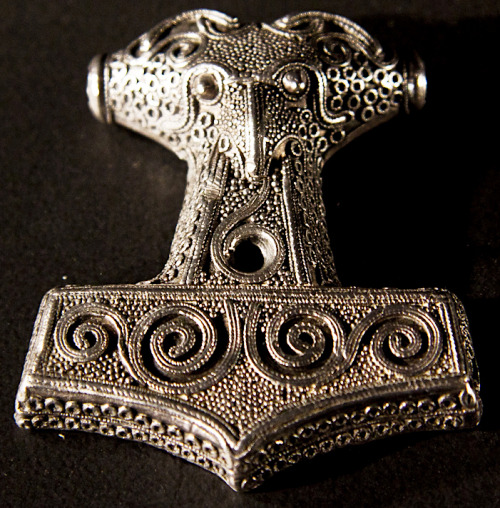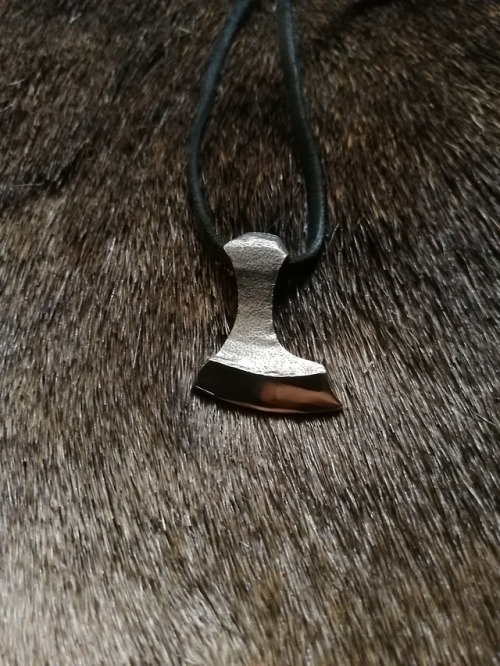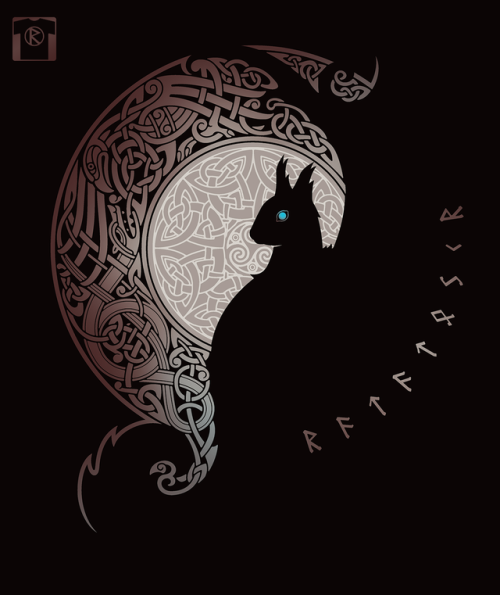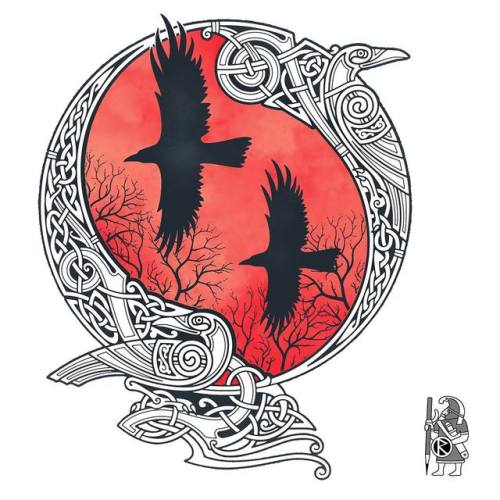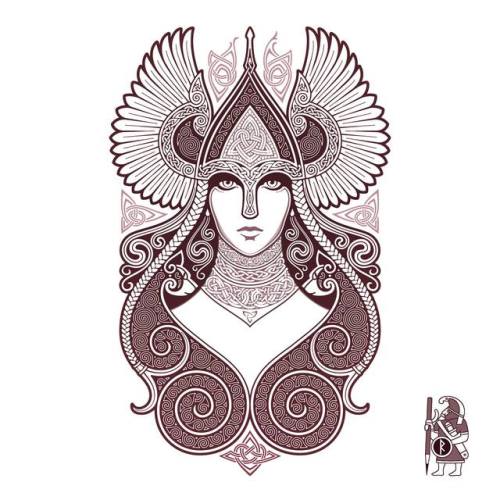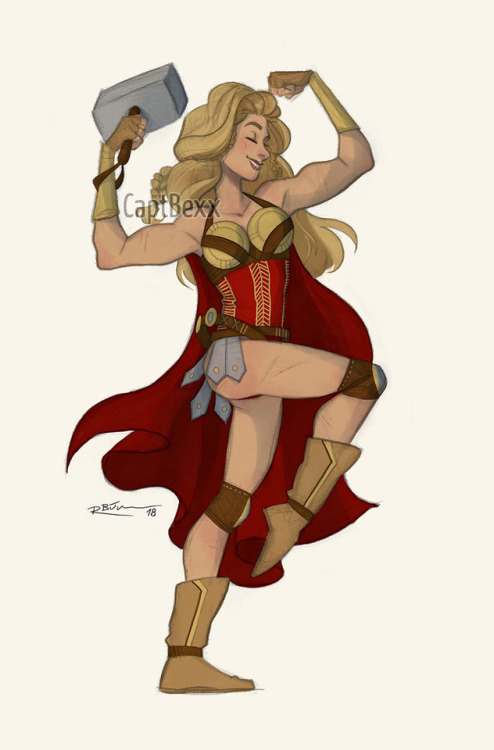#thors hammer

Y'all, I made a very cute mjolnir camping mug! The link to the store can be found in my pinned post.
Mjölnir (Thor’s hammer). 10th century silver pendant, discovered in Købelev, on the Danish island of Lolland.
Post link
Some new necklaces! This time caster ones.
You can find these in my Etsy shop among other items: https://www.etsy.com/shop/PrimordialFireForge
Post link
Thunderstones

A Scandinavian/Nordic folk belief pre-dating the Viking Age, a tordenstein (in Norwegian), known as a ‘thunderstone’ in English and ‘dynestein’ in Old Norse, refer to recovered Stone Age flint axes/tools (usually dug up from the earth after many years beneath the surface) used as talismans, protective amulets and sacred objects in heathenry.
Believed to have been hurled to earth by Thor, within lightning bolts during thunderstorms, as weapons to destroy trolls, alver (elves) and other malevolent vetter (mystical or spirit creatures), to protect the world from chaotic forces.
This ancient tradition is one of the longest continuously running and most widely spread customs in human history, practiced for many thousands of years across many cultures, in various different ways.

When thunderstones were first excavated from Viking Age graves, they were initially dismissed as accidental additions because they were dated as much as 5000 years before the burial. As more evidence emerged and more examples were excavated (including one in an untouched, sealed stone coffin), it was soon understood that these thunderstones held significant importance. Some unearthed examples were even carried to Iceland all the way from Norway by treacherous sea voyage! It is believed that they protected houses and people, along with protecting the hamingja (”luck”).


To the Vikings, there were three essential properties for a thunderstone, according to Olle Hemdorff, an archeologist from the University Of Stavanger, Norway and expert on the topic:
“The form had to be similar to an ax or a hammer—that is, a ground stone or flint. The stone had to have ‘flaming’ properties, which flint and quartz have. And all the stones were damaged with the edge chipped off—'proof’ that they fell from the sky.”
In Scandinavian folklore, thunderstones are seen as potent magical artefacts and anyone lucky enough to dig one up possesses a very powerful charm. Often worshipped as famial or ancestral deities/powers, they are said to protect against spells and witchcraft, if kept on the person.
Similarly, if placed within the wall of a home, they will bring good luck, prevent lightning from striking and protect against bad magic.
When used within a sacrificial blot ceremony, the thunderstone would be venerated with an offering of beer, poured over the stone, or anointed with butter.
Photographs:
- My own tordenstein.
- Lightning shower (CNN, 2014).
- Artistic recreation of Viking Age woman with tordenstein in excavated in Kongshaugen, Norway.
- Photograph of the Stone Age greenstone axehead and grave goods found buried with the Viking Age woman (as above)

